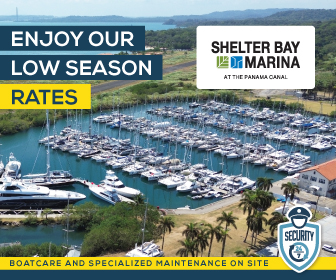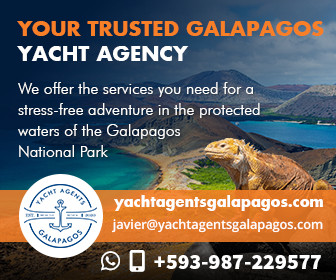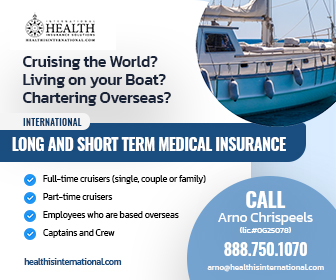Cruising the South Coast of the DR
Published 15 years ago, updated 6 years ago
Sailboats Bonanza and Voyageur C recently spend two weeks transiting the south coast of the D.R. from east to west. While we encountered fewer than ten other cruising boats along the way, we tried to gather as much information about clearance procedures, despachos, anchorages and general information as possible. Here’s a brief summary of our experiences and hopefully some useful information for other cruisers.
For reference, we had the Cruising Guide to the Dominican Republic Edition 4 by F. Virgintino along with electronic and Wavey Line charts HIS017 and HIS020.
Isla Saona
We arrived at the anchorage off the NW coast of Isla Saona during the night after crossing the Mona Passage. We anchored in 25 feet of clear, blue water with visible sandy bottom. A persistent SW swell had us up and moving early the next day through shallow water and sand bars to the smoother anchorage off Playa Palmillas on the mainland.
Playa Palmillas
We flew the yellow Q flag and spent that day and night at anchor without encountering any officials. Another cruising boat told us they were visited here by immigration and M2 (Drug Enforcement) but they had no issue with them being anchored prior to check-in.
Casa de Campo
We had emailed Casa de Campo marina prior to leaving Puerto Rico to make reservations for our stay in the marina. A mile from the entrance we called them on the VHF radio and got a response in English. We were told they were sending out a dinghy to guide us each into the basin and to our assigned slips. The marina is located behind a long breakwater that begins on the west shore of the Chavon River and extends to a striped lighthouse marking the starboard entrance to the marina channel. This channel is also clearly marked by red and green buoys.
NOTE: when taking directions from the guidebook, instructions are given as if you are arriving from the west. If coming from the east, the marina is not behind Punta Minas, it is east of it.
The officials were waiting at the slip for Voyageur C, while the dock master told Bonanza they were to stay on the boat as the officials would arrive shortly. The Government Authorities arrived at Bonanza in two golf carts and we were quickly processed by agents from the various authorities. With a combination of broken English and Spanish, we were able to communicate effectively. While independently cleared in, both boats were charged identically by officials and receipts issued as follows:
Vessel Clearance Fee – $43.00 US
Crew Member Fee x 2 – $20.00
Feed Back Tax x 2 – $20.00
Port Sanitation – $20.00 (Agricultural and Animal)
The charges came to a total of $103.00 and were the last receipts we ever saw. We were asked for tips and gave $10 to $20 per boat. We were pleasantly surprised since noonsite information indicated Casa de Campo check-in fees were the US $120 and the Marina Zar Par web site stated clearance processing would cost $160.
The Marina de Guerra controls all vessel traffic in and out of “official” DR ports. The system is attuned to commercial traffic but even applies to DR pleasure craft. There is a tendency to restrict arrivals and departures to daylight hours by issuing the clearance just before departure. This is problematic for cruisers wishing to set departures based on daylight arrivals at the next port, especially with the limited destinations and long distances between ports.
After a few days in Casa de Campo, we were ready to request our “despacho”, the clearance to our next destination, Boca Chica. The guidebook suggested we request this document the day before we wanted to leave, especially for leaving the country since immigration is also required.
Voyageur C requested their despacho at 8 AM when the offices opened and slipped their lines around 9 AM. Bonanza requested and received their despacho for Casa de Campo to Boca Chica at 5 pm the night prior to leaving the marina. This did not cost anything, but Bonanza gave a tip to the dock master who had helped us with numerous other things.
Boca Chica
If you go into Boca Chica don’t expect to anchor here comfortably because it is very tight quarters behind the island. There is a shallow sandbar that curves in towards the docks of the private yacht club and Marina Zar Par. Zar Par monitors channel VHF 5 and they will send a launch to guide you in from the end of the well-marked commercial channel. Bonanza, with a draft of 5 feet and without the launch strayed too far out of the channel and briefly touched bottom in this area. Stay close to the docks.
We strongly suggest making reservations with the marina for a slip or a mooring ball. The moorings were almost all occupied during our stay. Voyageur C picked up a vacant mooring and Bonanza was able to tie alongside the T dock for the first night. Marina staff took our despachos immediately on arrival. We moved into slips the next day in the light morning wind. This is a good spot to leave the boat for any inland trip you may have planned. The security is good, there is an excellent lunch and sometimes dinner restaurant on the dock and it is easy to catch a bus or taxi from here. They will drive you to the local supermarket. As a bonus, they have recently installed a fuel dock – diesel and gas.
The day before departure we requested and received a despacho onward to our next destination of Las Salinas. The despachos were issued for a 5 AM departure the following day. We did not pay for the documents, but Bonanza did tip the dockmaster who made all the arrangements for us.
Las Salinas
NOTE: Approaching Punta Calderas on the way into Las Salinas, there is a fish farm or similar structure marked by yellow buoys (at the time we were there). It is located at approximately 18 13N 70 34W, not 18 13 N 70 33 S as stated in the guide book.
In Las Salinas, we anchored close to the Salinas Hotel dock on a sand bottom in 20 feet. Very shortly after we anchored, a young officer came to the boat and collected our despachos. We requested an international clearance, as we planned to leave the DR from Las Salinas. When we went to the office (out on Punta Calderas) to check on our request, we were told we must go to Barahona since they could not clear us out because there is no immigration at Las Salinas.
This was a shock and cost us two days since both the guidebook and the folks at Marina Zar Par had indicated we could clear out of the country here. Apparently, you can make arrangements to clear out for a fee with sufficient notice, but doing this was well beyond our abilities to communicate in Spanish. We got the despacho to go to Barahona and we did (of our own volition) tip the officer 200 pesos per boat this time.
Barahona
We were pleasantly surprised to arrive at Barahona and find a tranquil mangrove anchorage at the end of a well-marked commercial channel. We anchored near the sugar dock on a mud bottom in 30 feet of water. As a bonus, the tiny Club Nautico el Manati marina with great lunch salads was right beside us. The coast guard and immigration boys arrived within minutes of our arrival. We gave them our despachos, stood all comers to a beer per man per boat and initiated our request for international clearance. Immigration took our passports and returned within the hour with them stamped. We paid the US $20.00 per boat for this delivery service.
Getting international despacho was another story. Several trips to the Marina de Guerra (at the town dock) and US $30 dollars per boat later we had the correct paperwork. The guidebook indicates that checking out should cost only $20 to the Marina de Guerra for the Despacho de Embarcaciones. We ended up paying a total of $50 per boat to clear out of the DR.
Bahia de las Aguilas
On departure, we went to Bahia de las Aguilas on the SW corner of the DR and anchored for a rather rolly night in 15 feet on a sandy bottom. No one bothered us for documents. It looked like a lovely spot to explore but weather forced us on to Ile a Vache, Haiti. Do watch for fish traps off Cabo Beata, in Canal de la Beata, and around Cabo Falso.
Conclusions
All in, it cost us less than the US $200 dollars per boat to pay for all the clearances and despachos and tips while traveling from Isla Saona to Barahona. We found that cruising along this coast very similar to the rest of the Caribbean when it comes to the anchorages, provisioning and enjoying a new country.
What is challenging is dealing with the officials. Learn basic Spanish before you arrive because very few people here speak English. Trying to communicate with the government officials was challenging and confusing for them and for us. Writing down a few key phrases and showing the officials eliminates the confusion caused by poor pronunciation.
Make plans ahead of time. For example, make reservations if you are going into a marina so the staff is prepared for your arrival. Let the local Marina de Guerra know your plans and then they may be able to prepare your despacho ahead of time. Keep your plans loose and be prepared to change them…often.
Bill and Leona
S/V Voyageur C
Michelle and Roy
S/V Bonanza
Related to following destinations: Barahona, Boca Chica, Casa de Campo, Dominican Republic, Las Salinas






